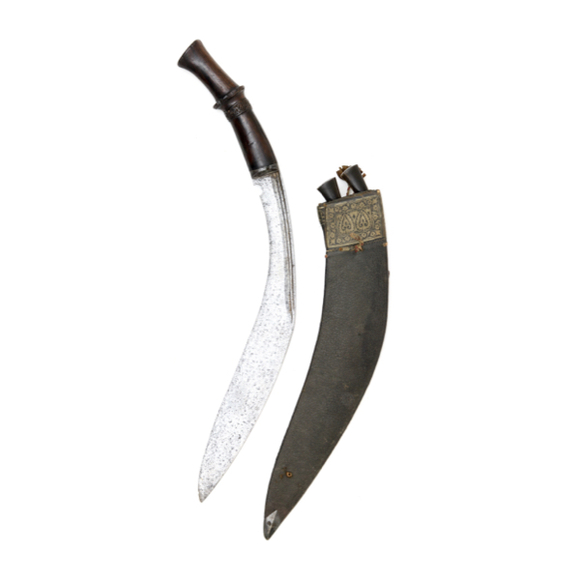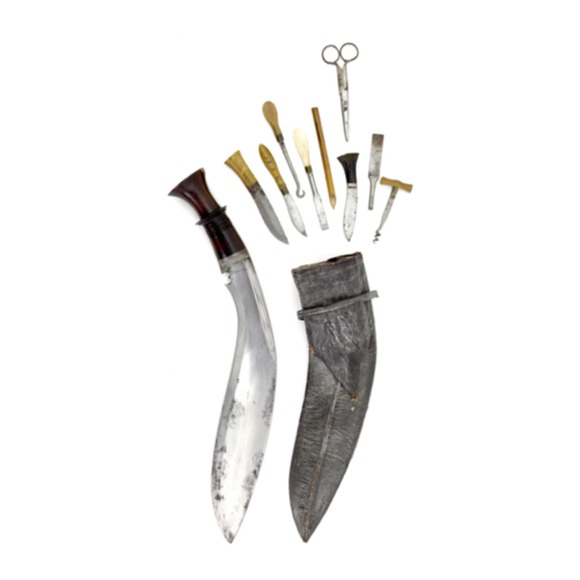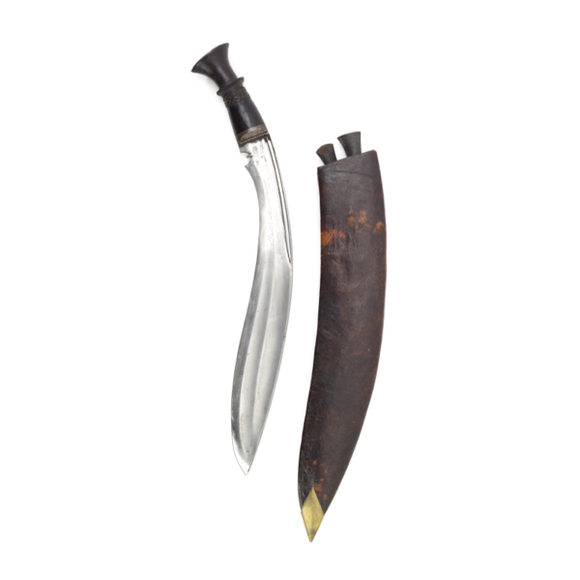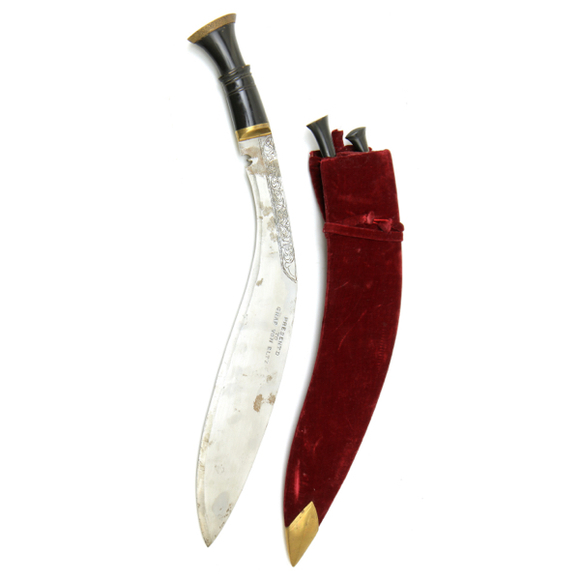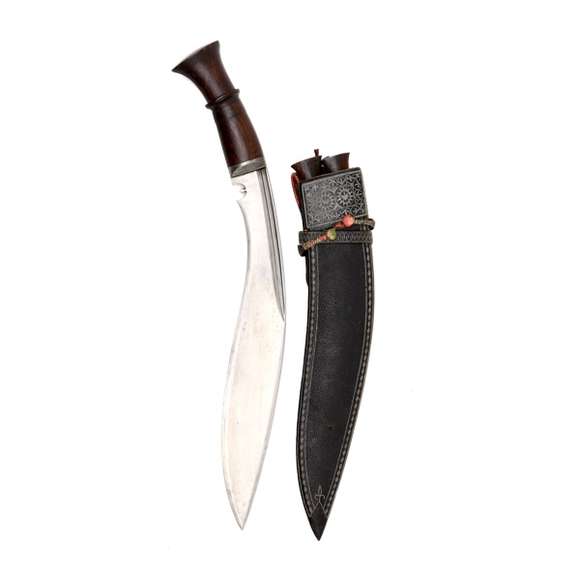Introduction
One of the most historically significant khukurī knives is in an unlikely place: The Palace Museum in Beijing. It was part of the collection of the Qianlong Emperor, who ruled from 1736-1796.
It was probably either captured in battle or presented during the signing of a treaty during the Sino-Nepalese War conflicts of 1788-1792.
The Sino-Nepalese War 1788-1792
The Ghurkas in the late 18th century under Bahadur Shah launched a number of expansive campaigns. Some westwards into the Punjab, until they were stopped by the British. Another campaign went into Tibet over a trade dispute. Tibet was a protectorate under the Qing dynasty, and so the Qianlong Emperor sent troops to aid his Tibetan allies.

Capture of Xiebulu by the Qing army, 1792.
Both parties suffered considerable losses. The Ghurkas lost over 4000 men and were pushed from the Tibetan plateau back to Nepal by Manchu General Fuk'anggan. But once on Nepalese ground, the Qing army was unable to attain victory and the battle ended in a stalemate.
They agreed on a treaty where Nepal accepted the status of Tribute State of the Qing. During his reign, the Qianlong Emperor received three tribute missions from Nepal in 1792, 1793, and 1795.
Qianlong's khukurī
The khukurī preserved in the Palace Museum was either brought back as a war trophy or was presented as a gift during one of the tribute missions. Therefore, it was most likely acquired between 1792 and 1795. The earliest event being Fuk'anggan's initial victory in 1792 and the last interaction the 1795 tribute mission to the Qianlong court. This makes it the earliest known provenanced khukurī in a public collection.
I first became aware of the piece through the Palace Museum publication "The Complete Collection of Treasures of the Palace Museum, Beijing 56: Armaments and Military Provisions" of 2008.1

I found several other angles of the piece online.



Some notable features compared to later khukurī
Hilt is stubby and rather fat at the top.
Pommel doesn't flare as much at the end.
Blade is moderately curved, with no peak on the spine.
Apex of the curve is further up the blade.
Notch in blade is a very shallow, and without protrusion.
Scabbard is strongly recurved with large metal chape.
An interesting addition is the presence of three long-ish karda (small knives) that fit into separate slots on either side of the blade, and one cakmak (flint striker). In later examples, they all tend to be on one side, and there is usually one karda and one cakmak.
Another 18th-century khukurī
No other khukurī exists in collections with a solid 18th-century provenance, but this rather detailed sketch was published in 1811, based on observations during a 1793 mission to Nepal.2

It, too, exhibits a strongly recurved scabbard. Strikingly similar are the hilts, but a rather fat top, and a pommel with limited flare.
We also see four-petaled flowers in the carved band on the hilt, now tilted 45 degrees in relation to those seen on the Palace Museum khukurī.
Another remarkably similar khukurī, clearly of the same ilk, appears in Holstein; Contribution à l’Etude Des Armes Orientaux of 1931.3

Both hilts are nearly identical, as are the chapes. Notice the very shallow notch, identical to the Palace Museum example.
Conclusion
The Palace Museum khukurī is the earliest provenanced khukurī in museum collections that I am aware of. It was most likely acquired between 1792 and 1795 and shows important parallels with a khukurī that appears in a publication describing a 1793 visit to Nepal. Together, the above pieces are a reliable benchmark of what high-quality late 18th century khukurī looked like.
Notes
1. See: Gugong Bowuyuan Cang Wenwu Zhenpin Quanji 56: Qing gong Wubei (故宫博物院藏文物珍品全集 56: 清宫武备) or "The Complete Collection of Treasures of the Palace Museum, Beijing 56: Armaments and Military Provisions", Palace Museum, Beijing. Published Hong Kong 2008. Page 151.
2. Colonel Kirkpatrick; Account Of The Kingdom Of Nepaul Being The Substance Of Observatons Made During A Mission To That Country In The Year 1793. W. Bulmer & Co, London, 1811. Pages 118-119.
3. P. Holstein; Contribution à l’Etude Des Armes Orientaux. Vol II. Paris, 1931. Plate XXXVI.


